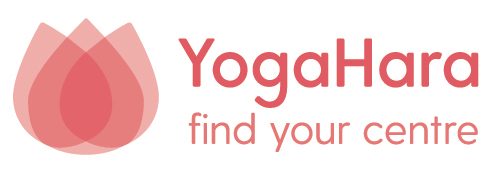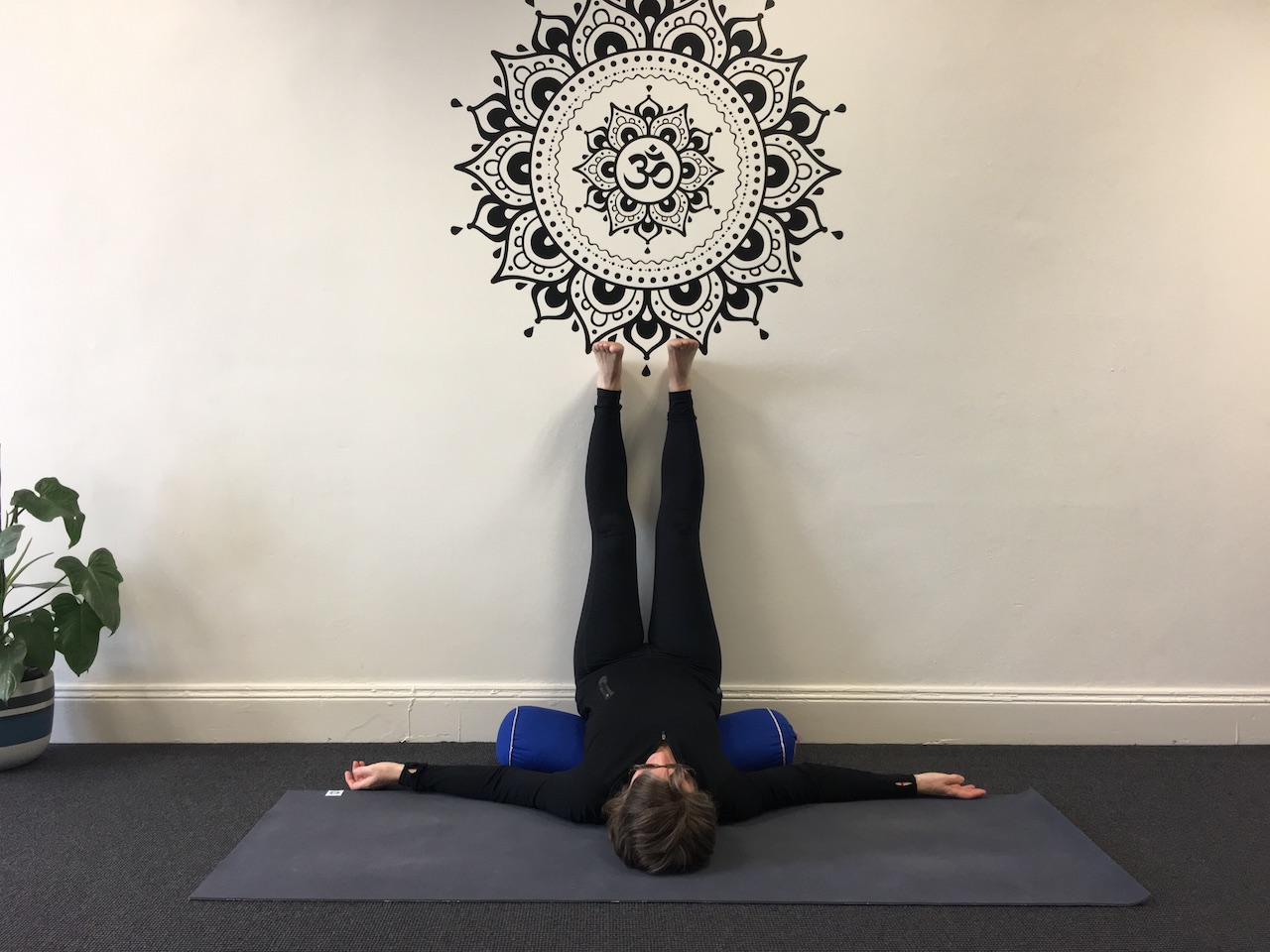I rocked up to my Naturopath recently rather tired, stressed and blaming peri-menopause and she said to me, have you been practicing Viparita Karani? Hmmm, it is usually a part of my practice but it hadn't been for a couple of months. I immediately set an intention to do it as soon as I got home. It is funny how we get these little reminders to do things we know we should be doing yet don't.
When I arrived home, it was the first thing I did and whilst in the pose, I made a commitment to practice it for 30 days. I am almost at the end and although I've missed a couple of days, it has been great. Those 5 - 15 minutes I have spent each day have left me feeling refreshed and rested.
Viparita (reversed, inverted) Karani (particular type of practice or action) or 'Legs up the Wall' is a gorgeous pose and one of the best restorative poses. It is often referred to as 'the great rejuvenator'. It has "an amazing ability to neutralise the body - if you are feeling tired, it tends to boost your energy, and if you come to your practice with jumps and jitters, it brings you down to earth." (1) Many yogi masters have been singing it's praises for centuries. And it is often the first thing I suggest to students who say they are unwell or tired and a bit run down.
Benefits
1. It is fantastic for the lymphatic system
The lymphatic system is "a network of tissues and organs that help rid the body of toxins, waste and other unwanted materials" (2). It is a crucial part of our immune system carrying white blood cells through the body to help fight infection. When the lymphatic system isn't working optimally, we can get a build up of fluid or oedema in some parts of the body, the legs and feet being the most common areas. While yoga in general (and other exercise such as walking), can help with our circulation and get fluids moving through the body, this pose allows gravity to support system while you relax and heal.
2. It is great for calming the nervous system
The pose is a beautiful, restorative pose and like all restorative poses, is calming for the nervous system. When I come into this pose, I almost immediately notice that my breathing changes, moves a little deeper into my body (from chest to abdominal breathing) and then I begin to relax through the pelvis and shoulders.
You can also work with a simple pranayama (breathing practice) such as samavritti or an extended exhalation. Samavritti is equal breathing, balancing your inhale and exhale to the same count and if you are comfortable, balancing the pauses as well. A simple extended exhalation can also be very effective, such as inhaling for 4 and exhaling for 6.
3. It calms the mind
As the body relaxes the mind relaxes. We can bring our attention to the breath and move into a simple breath centred meditation (as above), that calms the mind and helps us to refocus.
4. It is great before bed
Supported by 2 and 3 above, it is a great pose to do before bed or during the night if you can't sleep. I often do it on the bed with my hips on the pillow and my legs up the bedhead/wall.
5. It may relieve physical tension
It can be effective for relieving tension in the legs, feet, lower back and pelvis. Whether you spend your day on your feet or sitting, going upside down may assist in relieving tension in the lower body without the effort of some of the other inversions such as handstand.
How to
It takes a little bit of practice getting into it. I like to practice on a bolster (except when I have my period when I don't use a bolster), but you can practice without any support under the pelvis if that feels better for you.
Set the bolster or blanket about 15cm away from the wall then sit on your heels (vajrasana) with your back against the wall. Move your hips onto the very edge of the bolster then bring your elbow to the floor close to the thigh and roll onto the bolster swinging the legs up. It takes a bit of practice, you may need to wriggle and adjust to get the bolster in the right spot. To keep the pose relaxing, have the pelvis a little away from the wall so there is not too much tension in the hamstrings. If you have tighter the hamstrings, came further away from the wall. You can also practice without the bolster if that feels more comfortable.
Stay here for 5 - 15 minutes. Start with a shorter time and build it up over time. You can also try any of the variations below.
Contraindications
If you are menstruating practice without the the bolster elevating the pelvis. Some teachers say no version is appropriate during menstruation, however I find the version without a bolster relives some pain. But please listen to your own body.
As it is an inversion, people with glaucoma or detached retina should avoid this and other inversions.
Pregnancy in second and third trimesters.
High blood pressure.
Variations
1. Farhi, Donna. 'Yoga Mind, Body and Spirit", Newleaf, Dublin, 2000
2. Live Science






